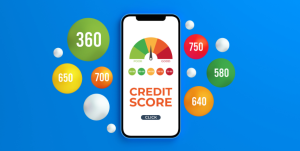Personal Loans
18 September 2019

Situations come up: you need to fix your car, to pay tuition, or some other issue that you don’t have the funds on hand for. Two common financial tools that cater to those needs are personal loans and lines of credit. Knowing the different types of loans and what they offer will help you make a well-informed decision in accessing the funds you need.
What is a Personal Loan?
A personal loan is a lump-sum amount borrowed from a financial institution, typically a bank or an online lender, for personal use. Unlike mortgages or auto loans, personal loans are unsecured, meaning they are not backed by collateral. Borrowers receive a fixed amount and agree to repay it in fixed monthly installments over a specified term.
Key Features of Personal Loans
Fixed Interest Rates: Many personal loans will offer fixed interest rates, meaning monthly payments will stay the same for the loan’s term. This provides predictability and allows borrowers to plan their budget accordingly. However, this also means borrowers should be aware that their rate will not drop if interest rates drop.
Fixed Loan Terms: Personal loans have a predetermined term, commonly ranging from one to seven years. This fixed term ensures a clear repayment timeline.
No Collateral Required: As unsecured loans, personal loans do not require collateral. Approval is based on the borrower’s creditworthiness, income, and other financial factors. Check out our breakdown on credit scores and reports here.
Purpose of Use: Personal loans can be used for a variety of purposes, including debt consolidation, home improvement, medical expenses, or major purchases.
What is a Line of Credit?
A line of credit is a flexible financial arrangement that allows individuals to borrow funds up to a predetermined limit. It operates like a revolving credit account, providing borrowers with the flexibility to access funds as needed. Both secured and unsecured options are available for lines of credit.
Key Features of Lines of Credit
Revolving Credit: Unlike personal loans, lines of credit offer revolving credit, allowing borrowers to access funds, repay them, and borrow again. This flexibility is particularly beneficial for ongoing or unpredictable expenses.
Variable Interest Rates: Lines of credit often come with variable interest rates, meaning the interest rate can fluctuate based on market conditions. Borrowers should be prepared for potential changes in their interest costs.
Secured or Unsecured Options: Some lines of credit require collateral (secured), while others do not (unsecured). Secured lines of credit may offer higher credit limits and lower interest rates.
Flexible Repayment: Borrowers make monthly payments based on the outstanding balance. As long as payments are made on time, borrowers can maintain access to the credit line.
What Borrowing Option Should You Choose?
The decision between a personal loan and a line of credit depends on individual financial needs and preferences. Personal loans are more suitable for one-time expenses with a defined amount, while lines of credit offer ongoing access to funds for various needs.
Before committing to any financial product, it’s crucial to carefully assess individual needs, compare terms, and choose the option that aligns with long-term financial goals.
Looking for examples on how loans work? Use our Financial Calculators to break down the elements of a loan and see how the variables can impact payments.
See Related Posts
popular articles
Categories
2
Today’s update
New Posts
blog read










